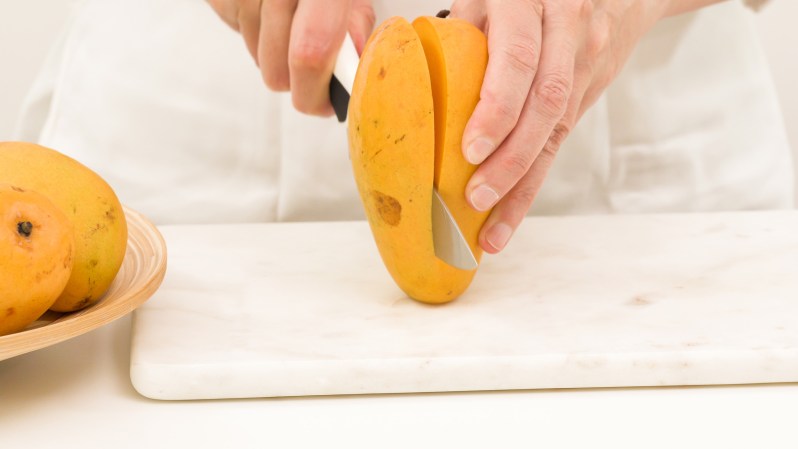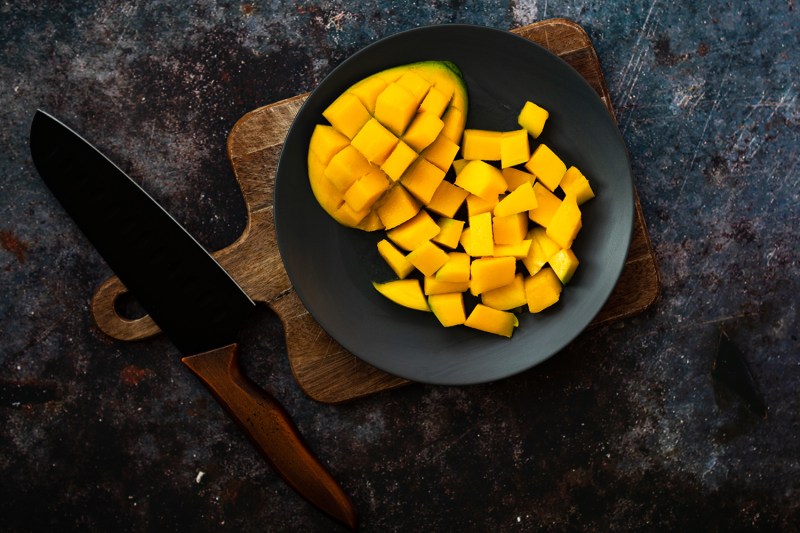 There’s a reason these South Asian delicacies are called the “king of fruits”. The flesh of a mango is sweet, sticky but getting to it can be a little tricky. Inside is a hidden pit, that can vary in size and location making it impossible to just slice, throw into a margarita and enjoy. If you’ve got a ripe mango, one that slightly squishy with its signature fragrance, the rest is almost effortless. Here’s how to get the most out of these tropical gold fruits, in four easy steps.
There’s a reason these South Asian delicacies are called the “king of fruits”. The flesh of a mango is sweet, sticky but getting to it can be a little tricky. Inside is a hidden pit, that can vary in size and location making it impossible to just slice, throw into a margarita and enjoy. If you’ve got a ripe mango, one that slightly squishy with its signature fragrance, the rest is almost effortless. Here’s how to get the most out of these tropical gold fruits, in four easy steps.
Related Reading
What is the best way to cut a mango?
- Hold the mango upright with the stem at the top. and find the narrower sides. Make your first cut down the side of the mango to the right of the center.
- Cut the other side the same way. If you feel resistance, you’re too close to the pit so shift your knife more to the outside of the fruit.
- Score the flesh on each half in a grid pattern and then turn the flesh inside out so the sections pop out.
- Use a knife to cut the cubes, or a spoon to scoop them away or leave them for a cool hedgehog effect.
Tips to cutting a mango with a knife?

Find the seed: The biggest trick with mango is to find the pit runs. It’s long and narrow, but very tough. You can’t cut through the middle, but you want to cut as close to the pit as possible with your knife.
Use the right knife: Use a smaller but very sharp paring knife to get the most fruit and for the most control. Make sure your fruit is facing the right way, and test your initial cut for resistance. A sharp knife and a steady hand are all you need to cut your mango. It’s a two cut process if you do it correctly.
Find a ripe mango: Take the time to find a ripe mango first so you aren’t cutting for nothing. Avoid gimmicky tools or methods. A simple, two cut process is the most straightforward way to get that sweet fruit.
How do you cut a mango without waste?
Mangos are tough to cut without waste because all the pits are slightly different. Focus on feeling the resistance to your knife and adjusting as you go to get two cuts as close to the seed as possible. You can trim excess fruit left on the seed to reduce waste.
How do you peel a mango?
Mango skin isn’t that tough. You can peel your mango with a knife, much like an apple. Keep in mind that mango is a wet fruit and maybe messy to serve this way. However, once you strip the peel, you’ll be able to cut the mango into chunks or eat it with your hand if you aren’t afraid of the mess.



